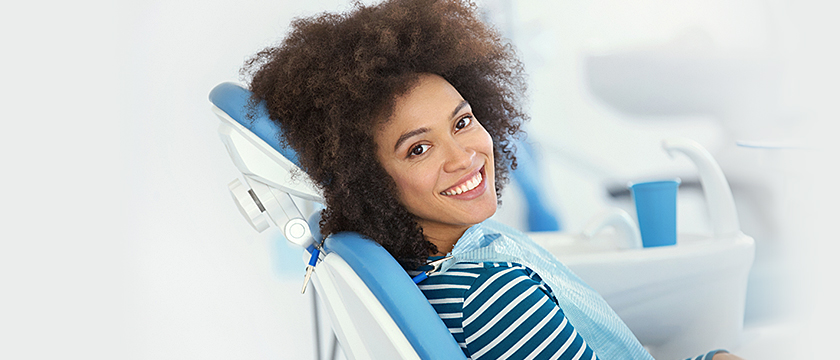 05 Apr 2021
05 Apr 2021
Many people enjoy the look of a bright white smile, but this classic marker of beauty can be difficult to maintain. Teeth are never naturally pure white and often tend to darken with age. Additionally, they acquire surface stains from food, drink, or tobacco use over time. As a result, people often become increasingly dissatisfied with the colour of their teeth.
Fortunately, these tooth discolouration issues can easily be treated using a variety of simple and painless tooth whitening procedures. These treatments can significantly whiten your teeth and help you make a sparkling first impression with everyone you meet. Both in-home and in-office options exist to allow every patient to balance convenience, cost, and effectiveness to best suit their needs.
Please note that to ensure optimal outcomes for your whitening treatment and dental health, we strongly recommend that you visit us for a cleaning before your whitening appointment.
What is Teeth Whitening?
Teeth whitening is a safe and reliable way to remove surface stains and discolouration from your teeth. This returns your teeth to their original colouration, making the teeth appear whiter than they were previously.
In some cases, you may be able to achieve an even lighter shade than your original tooth colour. The whiteness of the final result will be determined by a combination of the following factors:
- The type of procedure chosen.
- The length of the procedure.
- The number of times the procedure is repeated.
- The type of stains that are present.
- How dark your teeth are at the start of this process.
What Causes Tooth Staining?
Teeth may appear darker for a variety of reasons, including:
- Age. Teeth naturally wear down over time, and as the layers of enamel that cover them begin to thin, the darker yellow colour of the tooth’s internal dentin layer will show through more and more.
- The Original Colour of The Teeth. No one begins life with perfectly white teeth. Every individual is born with teeth that are either slightly yellow or slightly grey in appearance. This shade naturally becomes more intense over time but can be lightened with teeth whitening treatments.
- Food Consumption. Food and drinks such as wine, tea, coffee, tomato sauces, beets, and dark-coloured berries and juices can all stain your teeth over time. Acidic foods such as citrus fruits and vinegar also contribute to enamel loss and darken teeth as a result.
- Smoking. Nicotine stains settle on teeth and stain them brown. The longer you smoke, the darker and more permanent they become.
- Chemical Exposure. Chemicals like tetracycline can cause dark brown ribbon stains on teeth if they are consumed while the teeth are still forming. Similarly, overexposure to fluoride during childhood can lead to fluorosis, a condition that often causes unsightly white spots on the teeth.
- Grinding and Other Tooth Trauma. Teeth that are subjected to intense pressure during grinding or are damaged by blows or falls often develop small cracks in their enamel. These cracks trap particles from food and drink and easily develop stains as a result.
- Translucency: Translucency is one of the few tooth characteristics that can impede the effectiveness of teeth whitening. The more enamel you have on your teeth, the whiter and more opaque they appear. They will also respond better to whitening treatments. Conversely, if you have very little enamel present, your teeth may darken and might not have enough pigment left for whitening procedures to work properly. In these cases, your dentist in Mississauga may suggest alternate procedures to achieve the look you want, such as placing porcelain veneers.
What Are Your Whitening Options?
There are many different whitening treatments and procedures on the market, each with its own strengths and drawbacks. A wide range of whitening products are available for use in the office or at home. These products fall into two main categories: surface whiteners and bleaches.
Surface Whiteners
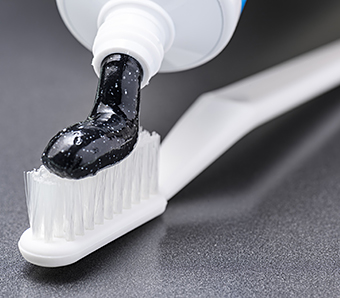 Surface whiteners are gels or pastes that use abrasives to whiten your teeth. The process is similar to how toothpaste uses tiny abrasive particles to remove plaque. The abrasives in surface whiteners are just hard enough to loosen up stains so they can be scrubbed away but not hard enough to cause significant enamel loss or tooth wear.
Surface whiteners are gels or pastes that use abrasives to whiten your teeth. The process is similar to how toothpaste uses tiny abrasive particles to remove plaque. The abrasives in surface whiteners are just hard enough to loosen up stains so they can be scrubbed away but not hard enough to cause significant enamel loss or tooth wear.
Activated charcoal is one of the most popular products marketed for teeth whitening. When put in toothpaste, it may help remove surface stains on your teeth. Charcoal is mildly abrasive and is also able to absorb surface stains to some degree. However, there is no evidence that it has any effect on stains below a tooth’s enamel or that it has a natural whitening effect.
While surface whiteners are effective for improving the look of your teeth, keep in mind that they do not remove tartar buildup. You will still need professional dental cleanings to get rid of this and keep your teeth and gums healthy.
Bleaches
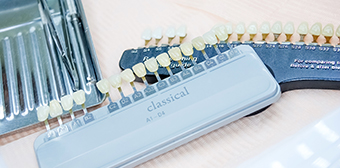 Peroxide-based bleaches are common tooth whitening treatments and usually produce excellent results. However, these formulations do not work equally well in all cases. Patients with fillings, crowns, root canals, and dark stains on their front teeth may have trouble achieving the shade they want with peroxide-based treatment. It is important to note that bleaching treatments should only be done while under a dentist’s care.
Peroxide-based bleaches are common tooth whitening treatments and usually produce excellent results. However, these formulations do not work equally well in all cases. Patients with fillings, crowns, root canals, and dark stains on their front teeth may have trouble achieving the shade they want with peroxide-based treatment. It is important to note that bleaching treatments should only be done while under a dentist’s care.
Home-Based Teeth Whitening Treatments
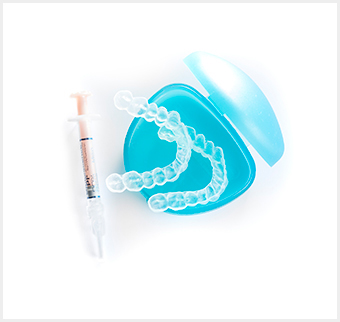 There are many options available to whiten your teeth at home. The more common methods include whitening toothpaste, strips, brush-on gels, trays, and products that feature accelerator lights. They are available from your dentist or can be purchased at retail outlets.
There are many options available to whiten your teeth at home. The more common methods include whitening toothpaste, strips, brush-on gels, trays, and products that feature accelerator lights. They are available from your dentist or can be purchased at retail outlets.
Clinical studies support the safety and effectiveness of home-use bleaching gels when used appropriately and after consulting with your dentist. Using an at-home whitening kit without consulting a dental professional first can cause hypersensitivity and damage your teeth. If you have active dental cavities, it is not recommended to whiten your teeth, as further sensitivity and irritation to the soft tissues can occur during treatment.
Take-Home Kits Available from Your Dentist
Ready to use whitening kits contain a custom-made tray created using an impression of your teeth. The whitening gels are available in different strengths, indicated as percentages, which are chosen based on your oral and dental health. Instructions on how to use the kit will be provided to you.
One of the examples of a whitening kit you can get from your dentist is Opalescence. It is a ready to use kit containing ten upper and lower trays with a layer of gel inside them. It is a safe whitening system we offer our patients and can whiten your teeth in 10 days.
What is Zoom Whitening?
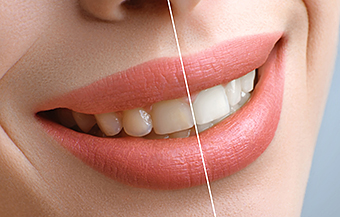 Zoom whitening is a high-tech tooth whitening procedure that uses a whitening solution, and a concentrated blue LED light to lighten teeth by several shades for most patients. It is completely safe to use, and its impressive results make it one of the most popular whitening treatments available.
Zoom whitening is a high-tech tooth whitening procedure that uses a whitening solution, and a concentrated blue LED light to lighten teeth by several shades for most patients. It is completely safe to use, and its impressive results make it one of the most popular whitening treatments available.
Zoom whitening procedures take place entirely inside your dental office and take just two hours from start to finish. Once your dentist has prepped your gums with a protective gel, applied the whitening treatment to your teeth, and activated it with the special light, all you have to do is wait. During this time, you can relax by reading a book, listening to music, or watching TV. Your dentist will rinse the remaining solution and gel off your teeth when your treatment time is up.
Who is a Good Candidate for Teeth Whitening?
Because teeth whitening does involve the use of mild chemicals and requires the patient to sit still for an extended period of time, it is not a suitable treatment for all patients. It is not recommended for:
- Children under 16
- Women who are pregnant or breastfeeding
- Patients with gum disease, untreated tooth decay, or exposed tooth roots
- Patients with restorations (fillings, crowns, bridges) in prominent places
- Patients with a history of tooth sensitivity or TMJ issues
- Patients with allergies to bleaching agents like peroxide
Individuals with primarily yellow tones in their teeth (as opposed to grey or brown tones) will usually have more success with teeth whitening treatments.
A patient must have realistic expectations of teeth whitening procedures to be considered a good candidate. These treatments are very effective, but they cannot usually produce the blinding white shade you may have seen in magazines and on TV. If this is the look you desire, there are other dental procedures that might be more suitable, including porcelain veneers.
Note that it takes an average of two weeks for whitening treatments to fully take effect. The initial shade of your teeth when leaving your dentist’s office may not be the same shade you see in your final results. If you are initially dissatisfied with the changes you see, be sure to wait for the full two-week period to pass to get a better idea of the true whiteness that has been achieved.
The Cost of Teeth Whitening
The cost of tooth whitening treatments is dependent on many factors, including the type of procedure you choose, how many times you must repeat that procedure, and the location of your dental office. Only your dentist in Mississauga can give you an accurate estimation of the cost of teeth whitening in your specific situation.
Most dental offices offer treatment options at a range of different price points for patients with varying budgets. While cheaper options may not be as effective as more expensive treatments, they can still produce impressive results for many people.
If you are interested in teeth whitening but are concerned that you cannot afford the expense, talk to us. We will discuss pricing and financing options with you to ensure that the treatments you want are as accessible for you as possible.
Choosing the Right Treatment for You
Every patient has unique needs when it comes to teeth whitening. To find the best treatment for you, you should:
- Consult Your Dentist. Before you commit to whitening treatment, you should discuss teeth whitening with your dentist. Dr. Tousi can provide you with personalized advice about whitening procedures, including whether you are a suitable candidate, which treatment would work best, and what kind of results you can expect to see.
- Determine How White You Want Your Teeth to Be. Some types of whitening treatments are more effective than others. If you want to lighten your teeth by more than two or three shades, you will need to choose one of the more potent options.
- Decide How Much You Are Willing to Spend. Whitening treatments are available at many different price points. The size of your budget will determine which treatment would be a good choice for you.
- Consider How Much Time You Are Willing to Spend Whitening Your Teeth. Some treatments take as little as one hour, but others require a commitment of several weeks. In general, cheaper treatments cost less but often take longer to show results.
Maintaining Your Results
If you want your new whiter smile to last as long as possible, there are some steps you can take to ensure that happens.
- Perform at-home maintenance whitening treatments at least once a year. Your dental office will have the whitening kits you need to do this.
- Avoid food and drinks with a high chance of staining for at least one week after your treatment. You can find an extensive list of common staining culprits above.
- After these first two weeks, sip dark liquids through a straw whenever possible.
- Establish an excellent oral hygiene routine. Floss at least once a day and brush your teeth at least twice a day for a minimum of two minutes each time. Using an electric toothbrush may also help to dislodge day-to-day surface stains that would otherwise settle on your teeth and discolour them.
Professional Teeth Whitening Services Available at Trillium Smile Dentistry
The whiter, brighter smile of your dreams is within your reach. Trillium Smile Dentistry offers excellent teeth whitening services, including Zoom whitening. You will love the dazzling results we can achieve, and as a direct billing dentist office, we offer affordability and convenience.
To make our whitening treatments as accessible and customized as possible, we offer our patients a free consultation with our staff. During this meeting, we will discuss your teeth whitening needs and provide you with a rough estimate of what some of your options might cost.
Contact us at 647-371-1894 to book an appointment for your complimentary whitening consultation today.
Also Read:
